Friday, November 30, 2018
The Story of a Painting
Tammo Geertsema posts this essay to describe this painting. Tammo Geertsema is a member of the Sault Indigenous Writers Collective. I found the description insightful and fascinating, a real learning experience.
THE
SACRED TALE OF WIINABOZHO AND THE STORYTELLERS' MIRROR: THE BEGINNING OF A
LIFE-LONG FRIENDSHIP ~~
Boozhoo,
hello!
This
painting, which I made in a time span of two moons, was completed in 2012, on
the third day of the Maple Syrup Moon. This day, on April 3, marks the
beginning of a life-long friendship and cooperation between two kindred
artists, one a jeweler and a graphic artist and the other a painter and a poet
and both storytellers at heart, each in their own right. Countless beautiful
tales have been spun around the mystery of the Storytellers' Mirror ever since
and still the story goes on...
The
painting depicting two children, a girl and a boy, flanked by two storytellers,
is a traditional teaching diagram that is inspired on the visual imagery of the
ancients, as well as on the (relatively) modern teachings of the Medicine
Wheel. I created the diagram like one would tell an aadizookaan, an allegorical
tale containing multiple layers of meaning.
The
image represents the act of storytelling viewed from a double perspective, or
rather from two (mirrored) perspectives: that of aadizookewinini (the human
storyteller, the person to the left) and that of aadizookaan WIINABOZHO (the
supernatural protagonist of the story, the person to the right). Grandfather
telling the story and Wiinabozho himself are both accomplished storytellers in
their own right.
But
when Grandfather and Wiinabozho combine forces, they create a magic energy that
bounces off one another to spin a truly amazing tale!
The
tale of this painted diagram - and the layers of meaning it carries - are told
in the tradition of the sacred pictographs the Anishinaabe ancestors left us,
scattered over numerous cliff walls and hiding in remote caves near the
coastlines of the Great Lakes; like the ancient spirit drawings, and like a
Medicine Wheel, the painting is a mirror, or reflection of things that are
inside every single one of us. This mirror concept reveals how there are many
aspects to us and that in each aspect of us there are even more aspects to
discover. As my friend Simone put it eloquently: “The Storytellers painting you
did, the very imagery…is shown in the old rock images that lurk inside us
somewhere”.
The
storytelling figure to the right represents Wiinabozho, half man half manidoo,
who is also known by a variety of other names and spellings, including
Wenaboozhoo, Nanabozho, Manabozho, Nanabush, and Wiisagejaak.
Wiinabozho
is considered to be the source and embodiment of the lives of all sentient
things, such as humans, animals, and plants. Every living thing on, beneath,
and above the earth he gifted with a spirit and a soul, and to each he taught –
through his magic powers and through his parabolic stories - the necessary
tricks needed to outsmart and outwit their enemies. Not only did he impart to
the Anishinaabeg the best remedies for treating illnesses, he, being an expert
shape shifter himself, taught the animals how to disguise themselves so that
they could survive.
Thus
the Anishinaabeg, although he often presents himself as a trickster and a
mischievous fantasist, regard Wiinabozho first and foremost as a manidoo
possessing great wisdom in the prolonging of life.
If
you look closely at the persons in the painting you will notice that I used
X-RAY IMAGERY to fill in the contour lines with designs and patterns of animals
and images of aadizookaanag (animal spirits and spirit guardians).
This
method of depicting the internal forces, not the subject of the painting
itself, as the main focal points, is one of the essential features of a
contemporary spiritual art that makes use of X-rage imagery.
This
art form, which is often called NATIVE WOODLAND, or MEDICINE ART, is derived
from mazinaajimowin, the ancient Anishinaabe tradition of spirit writing, where
sacred images were painted on, and sometimes inscribed in, rocks and birch bark
by the ancestors.
The
intention of X-ray imagery is to transport the audience into the sacred spirit
world revealing the true nature of things, where the soul, or essence, is more
important than the body containing these things.
The
images of the children and the figures that I placed inside the bodies of both
children and storytellers are rich with symbolism and carry different layers of
meaning; their precise meaning I will not impart here – at least, not all of
them and not completely.
The
knowledgeable elders who told sacred stories or knew how to read the rock
paintings and carvings did not explain everything either; they revealed just
enough to make people realize it is better not to want to take shortcuts to
wisdom and knowledge. The idea behind this is that one has to live up to the
old teachings before one is able to fully carry the wisdom the stories and the
rocks contain. In order to understand the core of the teaching the diagram
wants to impart, however, it is essential to know that the X-ray figures I
placed inside the bodies represent (some of) the protagonists and antagonists
of the tales being told: beings like thunderbirds, an underwater spirit, a
sturgeon, snakes, a marten, a badger, a raven, water fowl, medicine-bearing
plants and flowers, and a birch- bark covered wiigiwaam (wigwam) that are one
way or another related to Wiinabozho stories.
The
hare that is connected by a “spirit power line” to the X-ray figure depicted
inside Wiinabozho refers to his supposed association with hare and rabbits and
emphasizes his capacity of a contrary holding up a mirror to mankind; that the
power line is connected to the yellow Thunderbird figure indicates that the
stories told are filled with great magic. Each story featuring Wiinabozho as
the protagonist is always a source of power to the children listening to it;
each story has the potential to empower, and teach them valuable life lessons
as well…But also images of sacred objects and symbols, like a MIDE MIIGIS
seashell, which is used in the ceremonies of the Midewiwin, and a bear paw -
which is related to Mide ceremonies and with the dream world -, recount stories
within a story. These Mide symbols as well as the pipe the grandfather
storyteller is holding indicate that he is a ceremonial teacher, a member of
the Midewiwin. The symbols, therefore, are depictions of great spiritual power.
The
smoke from the pipe and the smoke from the mouths of both the Mide grandfather
and Wiinabozho are also indicative of great power; like a sacred breath the
strings of smoke coming out of the storyteller’s’ mouths blend at the top of the
painting, conjoining into a circle within two larger circles representing
GICHI-MANIDOO, the Universal Omnipresence of Mystery.
The
divided circle (unity symbol) in the center of the smaller circle reflects the
duality that exists in nature and in human nature. Blue is for the sky, red is
for the earth; together they form the universe.
Therefore,
the symbol reflects the notion that each living being consists of two separate
individuals, or parts, that exist and work together in relation to one another.
One part (which is colored blue) inspires, strengthens, and directs the other
part (which is colored red) – and vice versa. Similarly, one half can be
regarded as a story or a storyteller aspiring to complement the other story or
storyteller - which of course is represented by the other half – and vice
versa.
Miigwech
for listening to the story of this painting!
Gakina-awiiya,
miigwech - We are all related, thank you.
Subscribe to:
Post Comments (Atom)

















































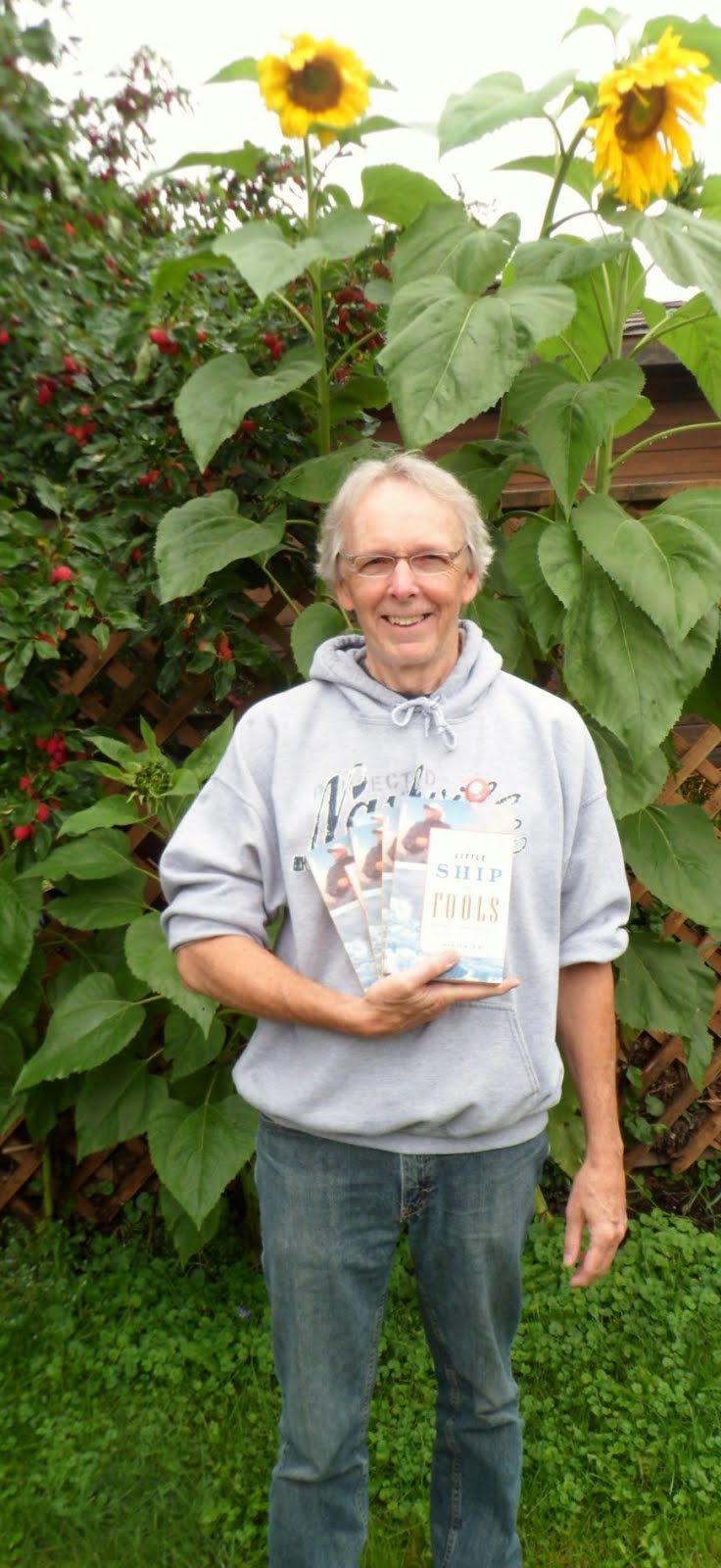
































































































































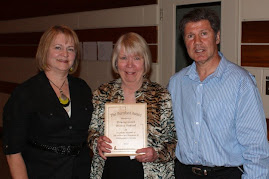









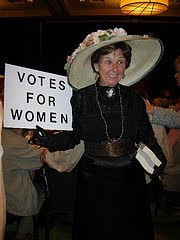




















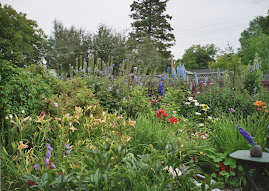

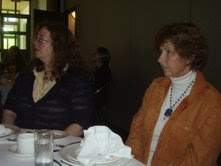



































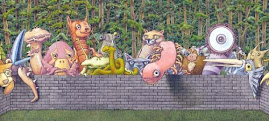
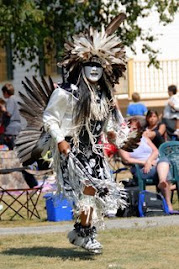
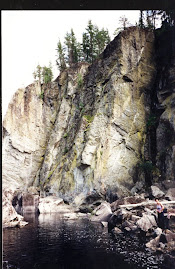





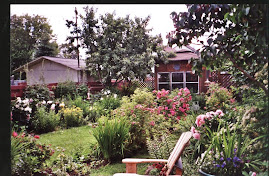










No comments:
Post a Comment